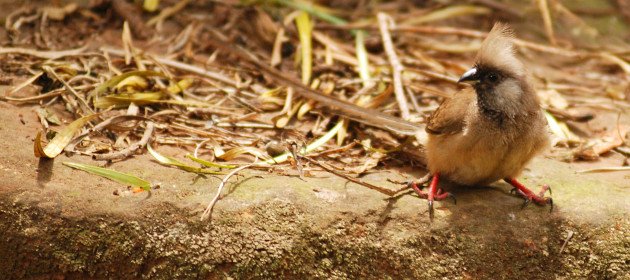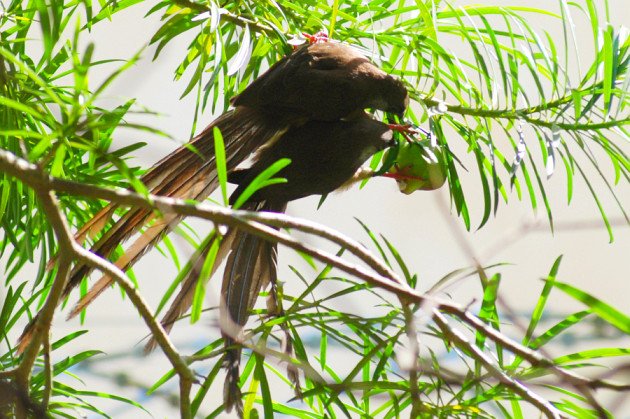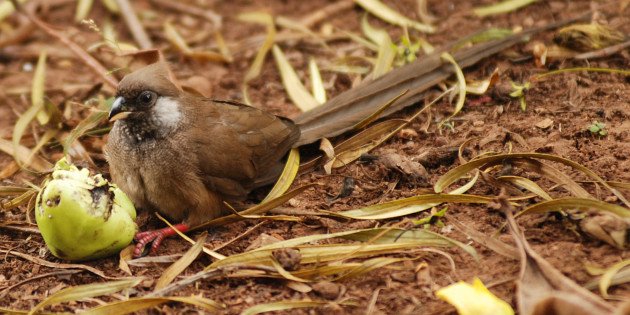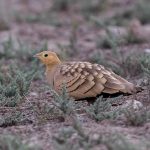
Mousebirds (order Coliiformes) are one of the perennial puzzles in bird systematics. They do not look or act much like any other birds (my photo above shows a Speckled Mousebird, Colius striatus, in Nairobi, Kenya).

Mousebirds are social fruit-eaters that dangle precariously at odd angles in tight clumps, feet spread wide and long tails often splayed. The six living species are all found in Sub-Saharan Africa.
They were once a widespread and diverse group, however, with many fossils known from what are now North America and Europe. In fact, paleornithologist Gerald Mayr, who has discovered many fossil mousebirds, described a new fossil species from Germany earlier this year, writing, “This exhibits a combination of skull features unknown from any other bird and converges on the skull of parrots…. The new fossil shows that late Oligocene European stem group Coliiformes significantly differed from their extant relatives in morphology and probably also in feeding ecology” (Late Oligocene mousebird converges on parrots in skull morphology).
But to what other birds are mousebirds related?
They do belong in Hackett et al.’s “land bird clade,” with passerines, parrots, falcons, woodpeckers, the Coraciiformes (kingfishers, hornbills, bee-eaters, etc.), and others, but where within that very large assemblage they fall is so far still a perplexing mystery.
Their unique physiologies offer few clues, and so far, large-scale genetic studies have concluded that mousebirds’ “affinities … remain equivocal” (McCormack et al. 2012) and that their systematic position is “highly unstable” (Wang et al. 2011) across different types of analyses.
In the field, mousebirds are fascinating and entertaining birds to observe, and the more so when we consider that these enigmatic African birds are the sole survivors of a diverse and puzzling lineage.














Maybe “aves” is a paraphyletic group because the mousebirds are an earlier off-shoot from feathered dinosaurs? 🙂
Love it — that would be some crazy long-branch attraction!